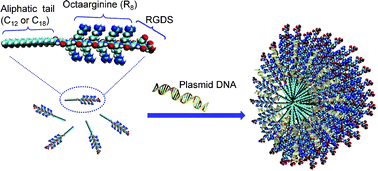Amphiphilic cationic lipopeptides with RGD sequences as gene vectors
Abstract
Two kinds of

* Corresponding authors
a
Key Laboratory of Biomedical Polymers of Ministry of Education & Department of Chemistry, Wuhan University, Wuhan 430072, China
E-mail:
xz-zhang@whu.edu.cn
Fax: +86-27-68754509
Tel: +86-27-68754509
Two kinds of

 Please wait while we load your content...
Something went wrong. Try again?
Please wait while we load your content...
Something went wrong. Try again?
J. Chen, H. Wang, C. Quan, X. Xu, X. Zhang and R. Zhuo, Org. Biomol. Chem., 2010, 8, 3142 DOI: 10.1039/C003538F
To request permission to reproduce material from this article, please go to the Copyright Clearance Center request page.
If you are an author contributing to an RSC publication, you do not need to request permission provided correct acknowledgement is given.
If you are the author of this article, you do not need to request permission to reproduce figures and diagrams provided correct acknowledgement is given. If you want to reproduce the whole article in a third-party publication (excluding your thesis/dissertation for which permission is not required) please go to the Copyright Clearance Center request page.
Read more about how to correctly acknowledge RSC content.
 Fetching data from CrossRef.
Fetching data from CrossRef.
This may take some time to load.
Loading related content
